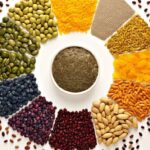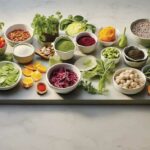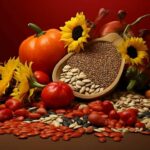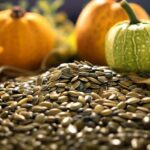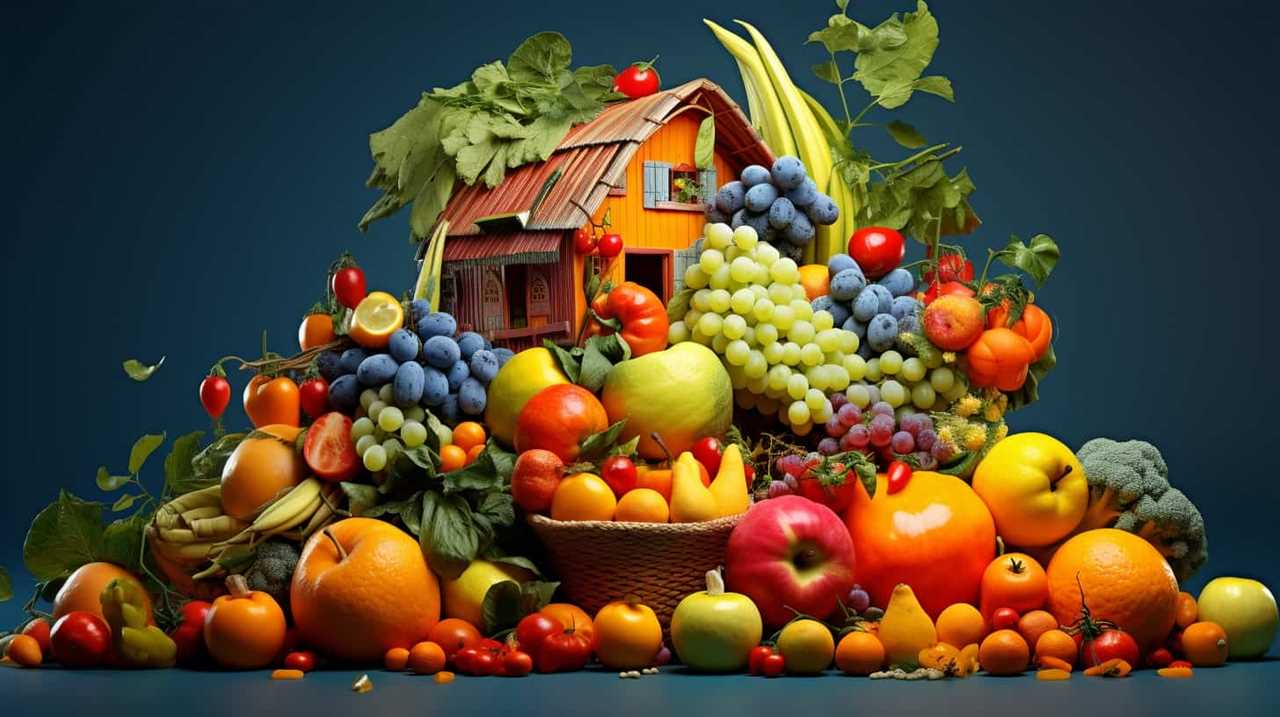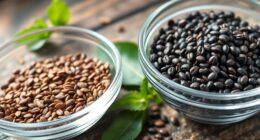Did you know that ancient civilizations have recognized the incredible nutritional benefits of seeds for hundreds of years? This article explores 12 historical nutrition facts that emphasize the importance of seeds.
From the ancient Mayans’ use of chia seeds for endurance and energy to the Aztecs incorporating them into their cuisine, we uncover the secrets of these superfoods.
Join us as we delve into the rich history and practical applications of seed power for a healthier, more nourished life.
Key Takeaways
- Chia seeds were cultivated and valued by ancient civilizations for their nutritional benefits and cultural significance.
- Chia seeds are considered a superfood due to their rich nutrients, including omega-3 fatty acids, fiber, protein, and antioxidants.
- Incorporating chia seeds into the diet can aid in weight management, improve digestion and heart health, and provide sustained energy throughout the day.
- Chia seeds have versatile culinary uses and can be added to various dishes, honoring ancient traditions and preserving cultural practices.
Ancient Mayan Use of Chia Seeds
In our exploration of seed power, let’s delve into the ancient Mayan’s utilization of chia seeds.
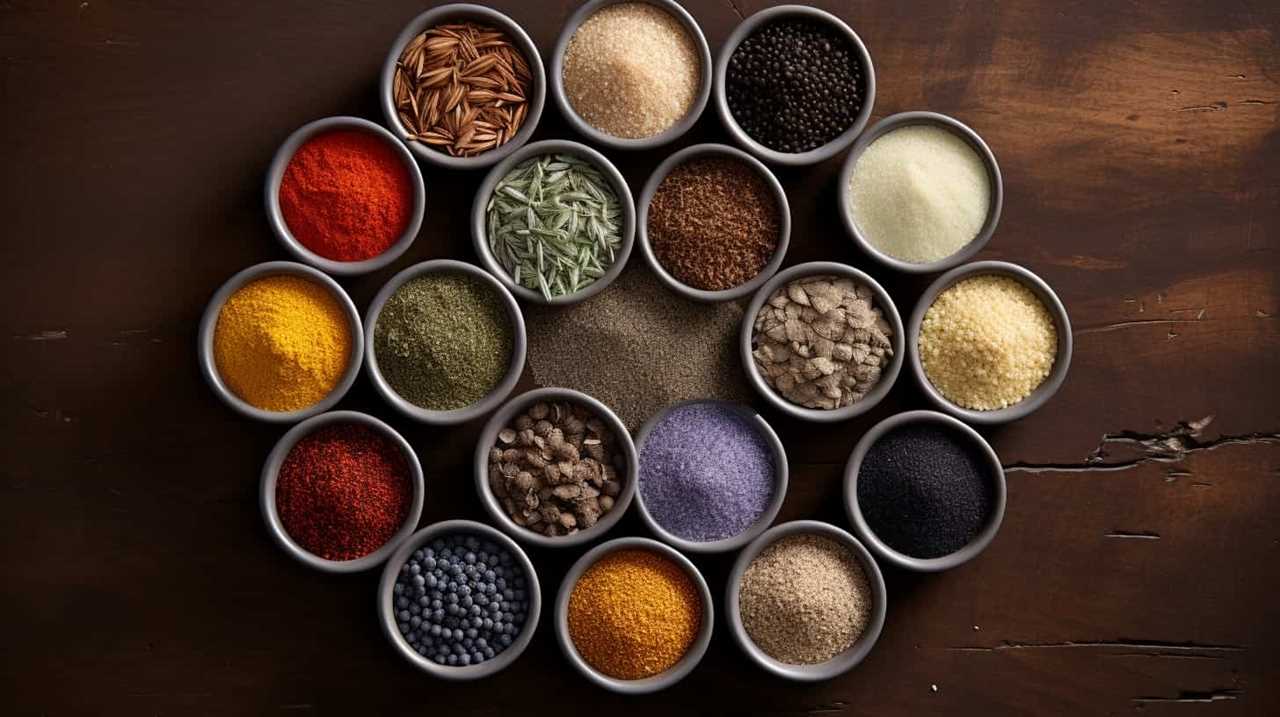
The ancient Mayan civilization, known for their advanced agricultural techniques, cultivated chia seeds as a staple crop. They employed innovative farming methods such as terracing and raised beds to optimize water usage and soil fertility.
Chia seeds weren’t only valued for their nutritional benefits but also as a trade commodity. As a source of sustainable energy and essential nutrients like omega-3 fatty acids, fiber, and antioxidants, chia seeds provided the Mayans with nourishment and endurance.
They were compact and easily transportable, making them ideal for long-distance trade routes. The Mayans recognized the value of chia seeds, both for their own sustenance and as a valuable asset in their trading endeavors.
Chia Seeds in Aztec Cuisine
As we continue our exploration of seed power, let’s now turn our attention to the role of chia seeds in Aztec cuisine. Ancient chia seed recipes were an essential part of the Aztec diet due to their nutritional value and versatility in culinary applications. Chia seeds were commonly used in beverages, such as chia fresca, which combined the seeds with water, fruit juice, and sweeteners. These seeds were also incorporated into dishes like atole, a warm porridge-like beverage, and tamales, a traditional Mesoamerican dish.
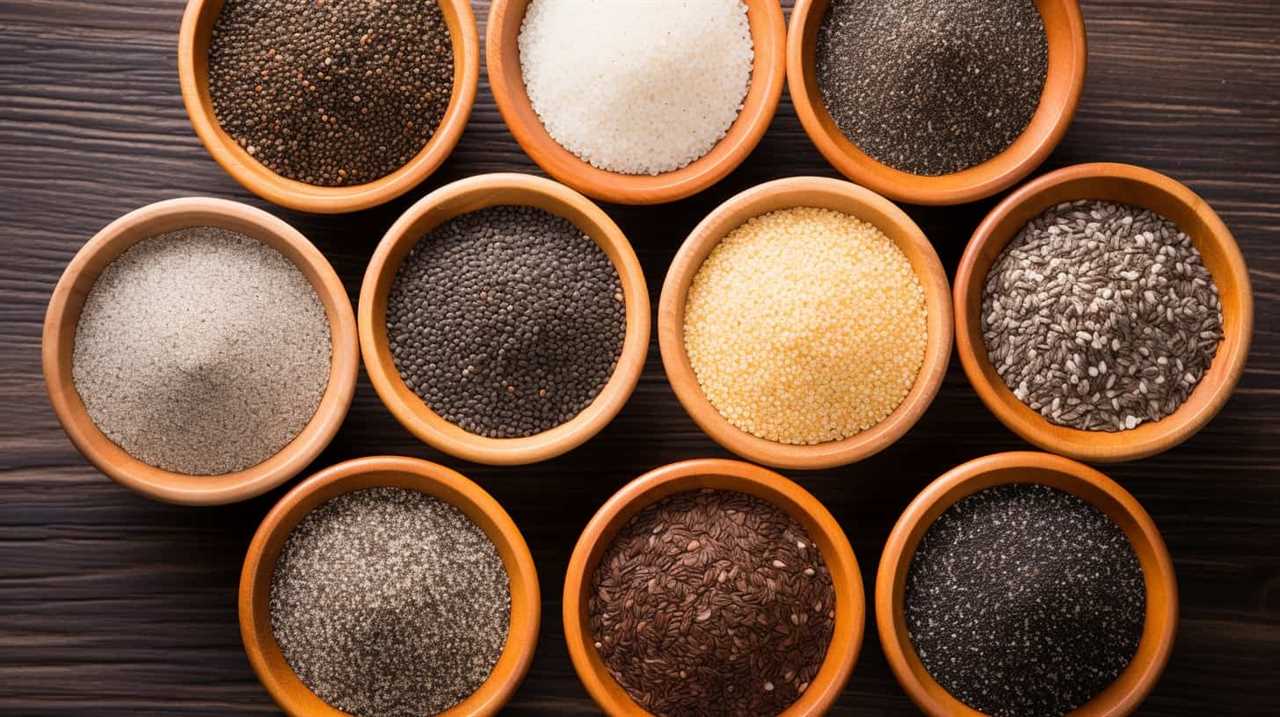
Chia seeds in modern cuisine have gained popularity as a superfood, known for their high content of omega-3 fatty acids, fiber, and antioxidants. They can be added to smoothies, yogurt, baked goods, and even used as a vegan egg substitute. Incorporating chia seeds into our diet is a simple and nutritious way to honor the ancient Aztec tradition while enjoying their health benefits in our modern lives.
Chia Seeds as a Superfood
Continuing our exploration of seed power, let’s delve into the nutritional benefits of chia seeds, which have earned them the status of a superfood. Ancient cultures, such as the Aztecs, cultivated chia for its incredible nutritional properties. Today, chia seeds have become a staple in modern cuisine, thanks to their versatility and health benefits.
Here are three reasons why chia seeds are considered a superfood:
- Rich in nutrients: Chia seeds are packed with essential nutrients such as omega-3 fatty acids, fiber, protein, and antioxidants. These nutrients support heart health, digestion, and overall well-being.
- Excellent source of energy: Chia seeds are an excellent source of sustainable energy, thanks to their high fiber and healthy fat content. They provide a steady release of energy, making them perfect for athletes or those needing an energy boost throughout the day.
- Aid in weight management: Chia seeds absorb liquid and expand in the stomach, promoting a feeling of fullness and reducing appetite. This can help with weight management and prevent overeating.
Incorporating chia seeds into your diet is a simple and effective way to boost your nutrition and enjoy their numerous health benefits.
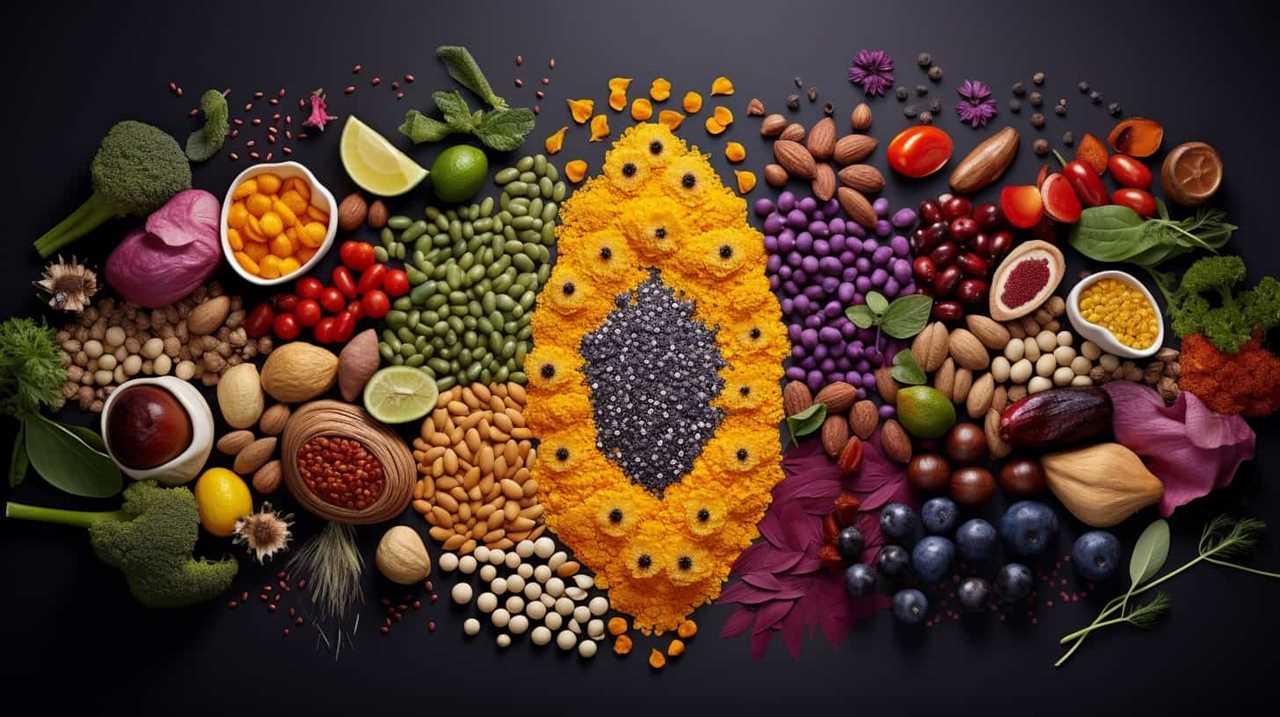
Chia Seeds in Mesoamerican Diets
Chia seeds played a significant role in the ancient Mesoamerican diets, providing a source of essential nutrients and energy. These small but mighty seeds were valued for their high content of omega-3 fatty acids, fiber, protein, and minerals.
Incorporating chia seeds into our modern diets can offer numerous health benefits, including improved digestion, heart health, and weight management.
Chia’s Ancient Dietary Role
Exploring the historical dietary practices of Mesoamericans, we uncover the significant role chia seeds played in their nutrition. Chia seeds have a long history in Mesoamerican culture, with evidence of ancient chia farming dating back thousands of years. Today, chia seeds continue to be a popular ingredient in modern diets due to their numerous health benefits.
Here are three reasons why chia seeds are a valuable addition to your diet:
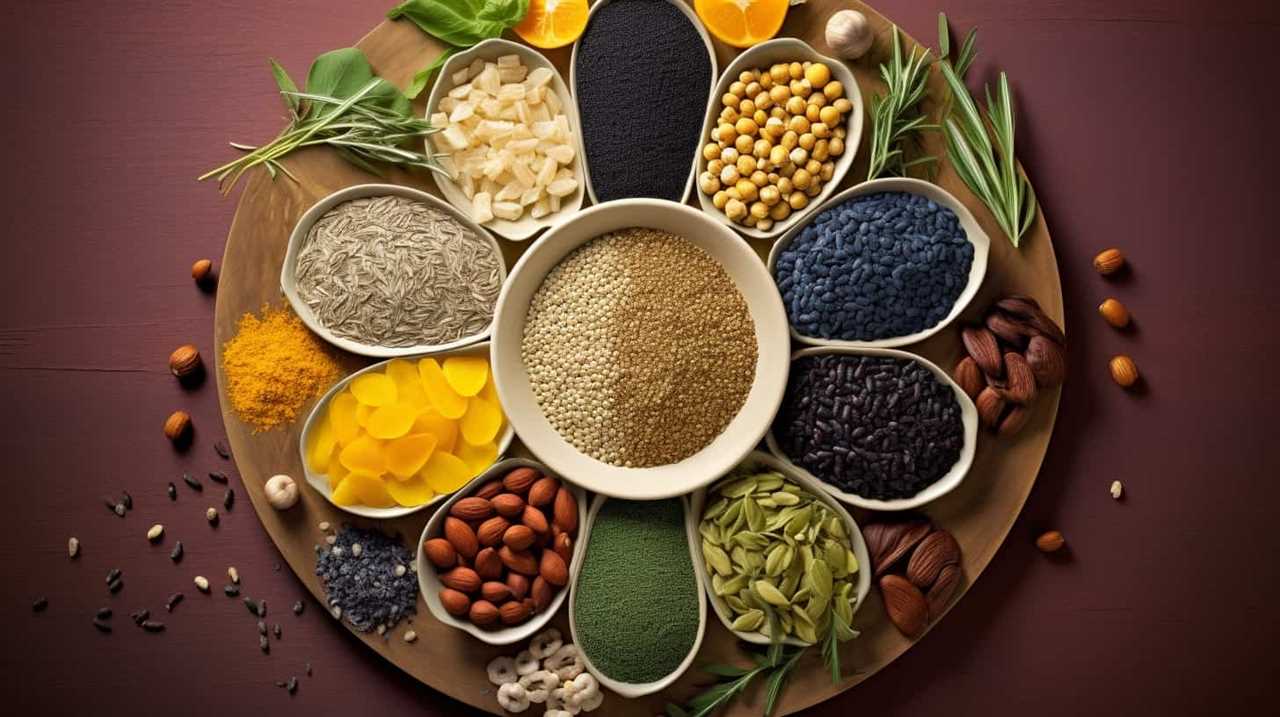
- Nutrient-rich: Chia seeds are packed with essential nutrients like omega-3 fatty acids, fiber, protein, and antioxidants, making them a nutrient powerhouse for overall health and well-being.
- Versatile: Chia seeds can be easily incorporated into various dishes, such as smoothies, salads, and baked goods, adding a nutritional boost without altering the taste significantly.
- Satiating: Despite their small size, chia seeds have the ability to absorb liquid and expand in your stomach, helping you feel fuller for longer and aiding in weight management.
Now that we understand the historical significance of chia seeds, let’s delve into their nutritional benefits.
Nutritional Benefits of Chia
Let’s now explore the nutritional benefits of chia seeds in Mesoamerican diets. Chia seeds have been consumed for centuries in Mesoamerica, and for good reason. These tiny seeds are packed with nutrients that can support a healthy and balanced diet.
One popular way to enjoy chia seeds is by making chia seed pudding. This delicious and nutritious treat can be made by combining chia seeds with a liquid, such as almond milk or coconut milk, and letting it sit overnight. The result is a creamy and satisfying pudding that can be enjoyed as a snack or even a dessert.
Another great way to incorporate chia seeds into your diet is by adding them to smoothies. Chia seeds can add a boost of fiber, protein, and omega-3 fatty acids to your smoothie, making it even more nutritious and filling.
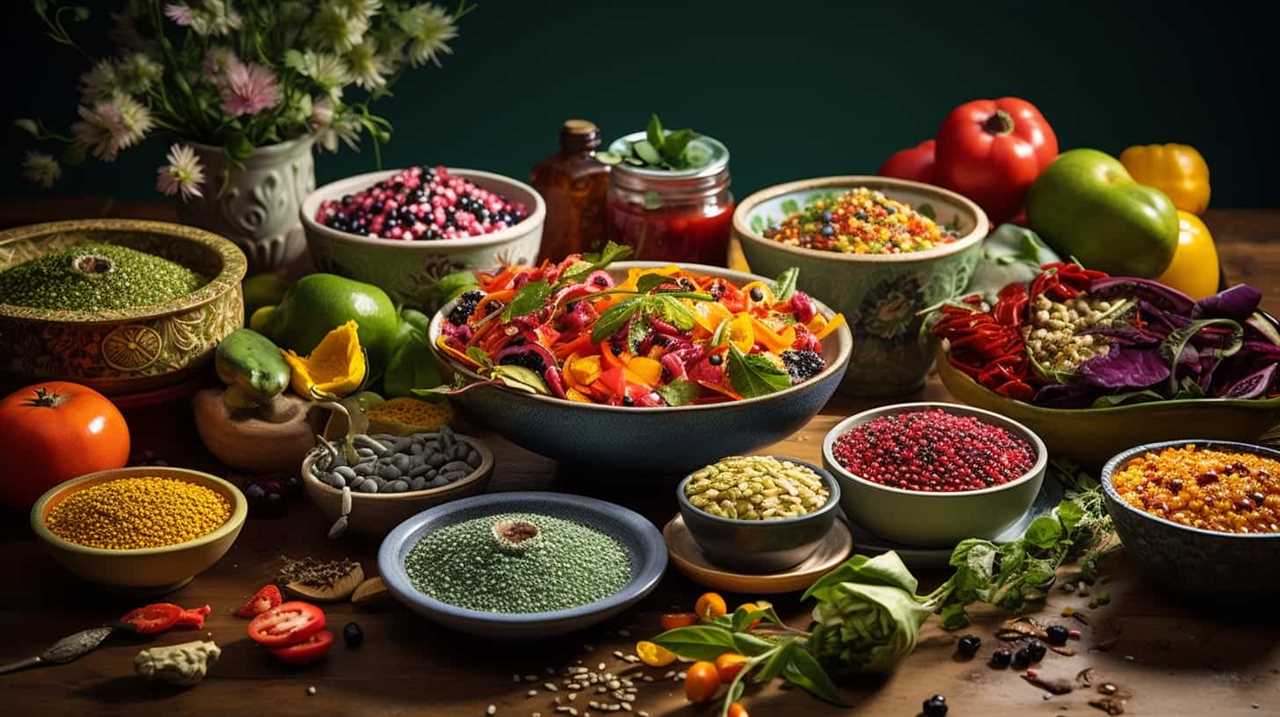
Incorporating chia seeds into your diet can provide numerous health benefits. They’re a great source of fiber, which can aid in digestion and help you feel full for longer. Chia seeds are also rich in omega-3 fatty acids, which are essential for brain health and can help reduce inflammation in the body.
Chia Seeds for Endurance and Energy
One of the key benefits of incorporating chia seeds into our diet is their ability to provide us with long-lasting endurance and sustained energy. Chia seeds have become increasingly popular in modern diets due to their remarkable nutritional profile. Here are three reasons why chia seeds are a great addition to your daily routine:
- High in fiber: Chia seeds are packed with fiber, which helps to regulate digestion and keep us feeling fuller for longer. This can aid in weight loss by reducing overall calorie intake.
- Rich in omega-3 fatty acids: These essential fats are known for their anti-inflammatory properties and are crucial for brain health and function. Including chia seeds in our diet can improve cognitive performance and boost energy levels.
- Natural source of carbohydrates: Chia seeds are an excellent source of carbohydrates, providing a steady release of energy throughout the day. This can enhance endurance during physical activities and promote optimal performance.
By incorporating chia seeds into our diet, we can enjoy sustained energy levels and reap the numerous health benefits they offer.
Now, let’s explore the historical significance of chia seeds in pre-Columbian cultures.
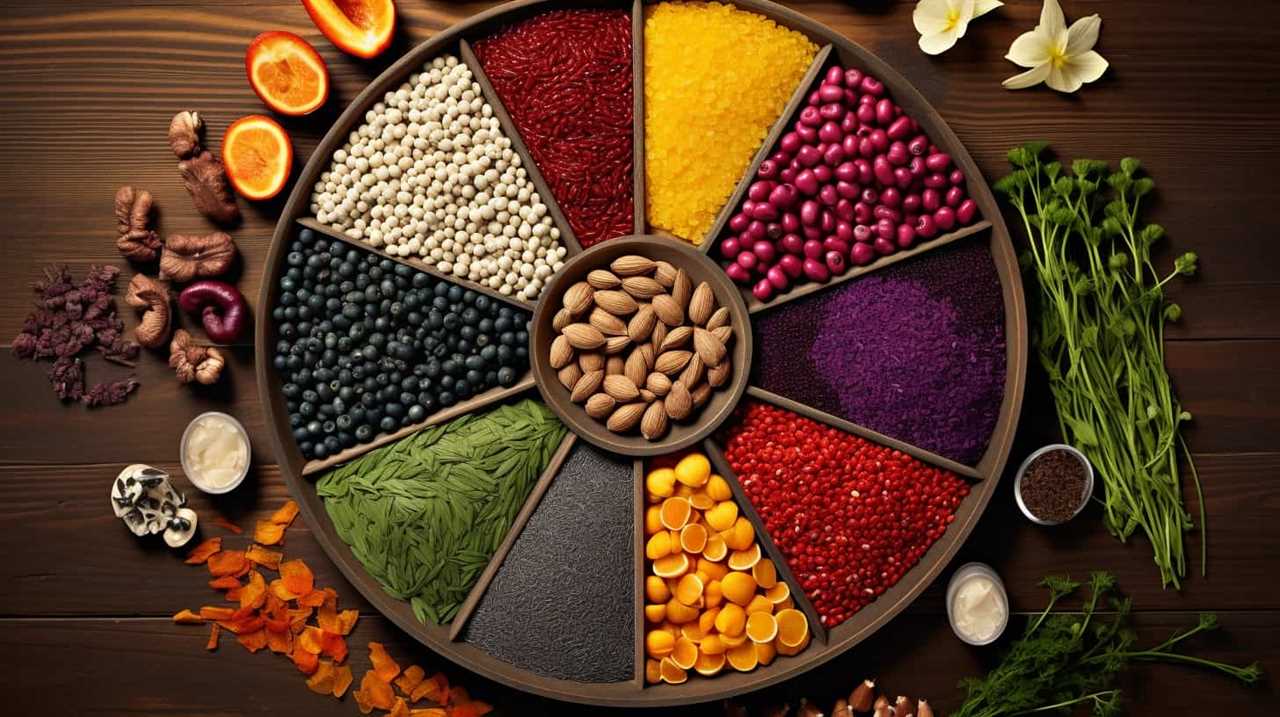
Chia Seeds in Pre-Columbian Cultures
Chia seeds played a significant role in the diets and culture of pre-Columbian civilizations. These ancient civilizations recognized the nutritional power of chia seeds and incorporated them into their daily lives through various rituals and preservation techniques.
| Ancient Chia Seed Rituals | Chia Seed Preservation Techniques |
|---|---|
| Chia seeds were used in religious ceremonies to symbolize fertility and abundance. | Chia seeds were often ground into a fine powder and mixed with water to form a gel-like substance. This gel was then stored in containers made from clay or woven baskets to keep it fresh for long periods of time. |
| Chia seeds were also used as offerings to the gods, believed to bring good fortune and prosperity. | Another preservation technique involved toasting the chia seeds before storage, which helped to prolong their shelf life and maintain their nutritional value. |
| Chia seeds were consumed by warriors before battles to provide sustained energy and endurance. | The seeds were sometimes mixed with other ingredients such as honey, nuts, and dried fruits to create energy bars that could be easily carried and consumed on the go. |
These ancient chia seed rituals and preservation techniques highlight the importance and versatility of chia seeds in pre-Columbian cultures. Transitioning into the subsequent section about ‘chia seeds as a source of omega-3’, it is clear that chia seeds have a rich history and continue to be valued for their nutritional benefits.
Chia Seeds as a Source of Omega-3
As we delve into the nutritional benefits of chia seeds, it’s important to highlight their role as a rich source of omega-3. Chia seeds have been used since ancient times, originating from Central and South America, where they were a staple in the diets of civilizations like the Aztecs and the Mayans. Today, chia seeds continue to be valued for their nutritional properties and are widely used in modern cuisine.
Here are three reasons why chia seeds are an excellent source of omega-3:
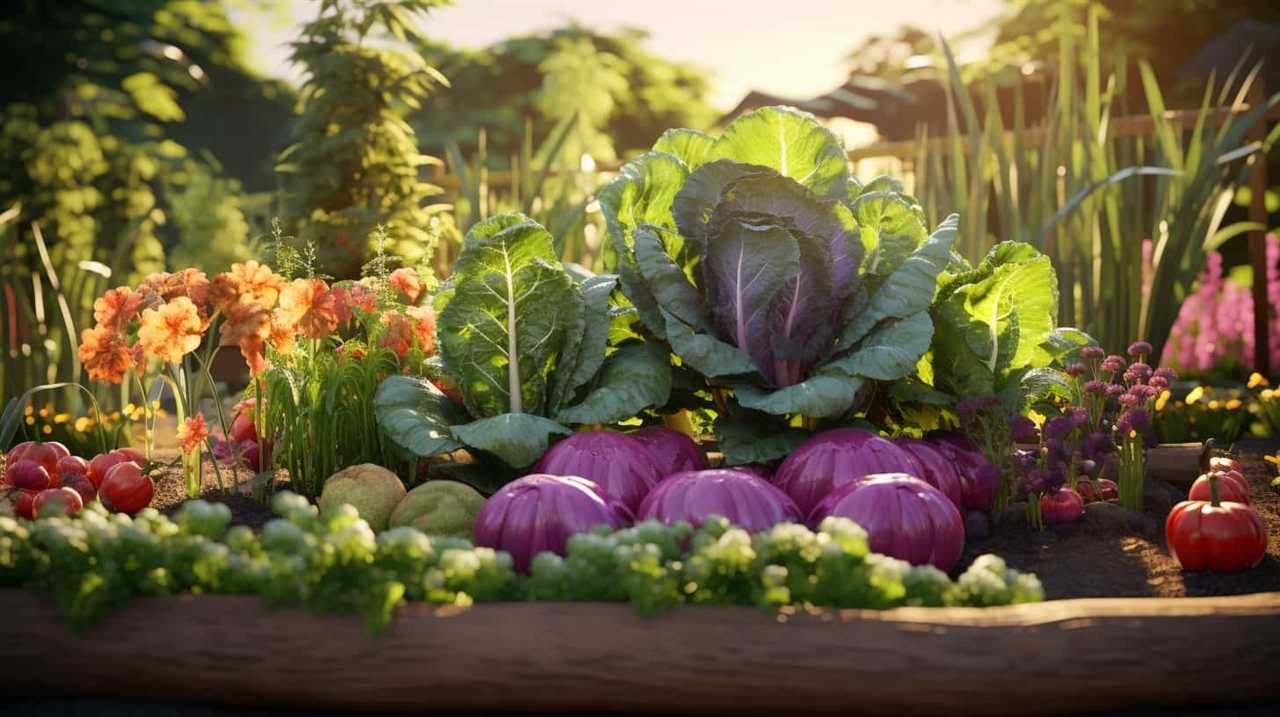
- High omega-3 content: Chia seeds are one of the richest plant-based sources of omega-3 fatty acids, specifically alpha-linolenic acid (ALA). These essential fats play a crucial role in brain health, reducing inflammation, and supporting heart health.
- Omega-3 to omega-6 ratio: Chia seeds have an optimal omega-3 to omega-6 ratio, which is important for maintaining a healthy balance between these two essential fatty acids. A high omega-6 to omega-3 ratio is associated with inflammation and chronic diseases.
- Plant-based alternative: Chia seeds offer a valuable plant-based alternative for those who follow a vegetarian or vegan diet and may not consume fatty fish, a common source of omega-3. Incorporating chia seeds into your diet can help meet your omega-3 requirements.
Chia Seeds in Ancient Medicinal Practices
Our ancestors’ utilization of chia seeds in ancient medicinal practices highlights the remarkable healing properties possessed by this powerful seed.
In ancient Mayan medicinal practices, chia seeds were highly regarded for their medicinal benefits. The Mayans believed that chia seeds had the ability to boost energy levels, improve digestion, and support overall health and vitality.
Chia seeds were incorporated into various Mesoamerican rituals as an offering to the gods, symbolizing their importance and reverence. These ancient practices demonstrate the deep-rooted belief in the therapeutic properties of chia seeds.
Today, we can still harness the ancient wisdom by incorporating chia seeds into our diets as a means of promoting overall health and well-being.
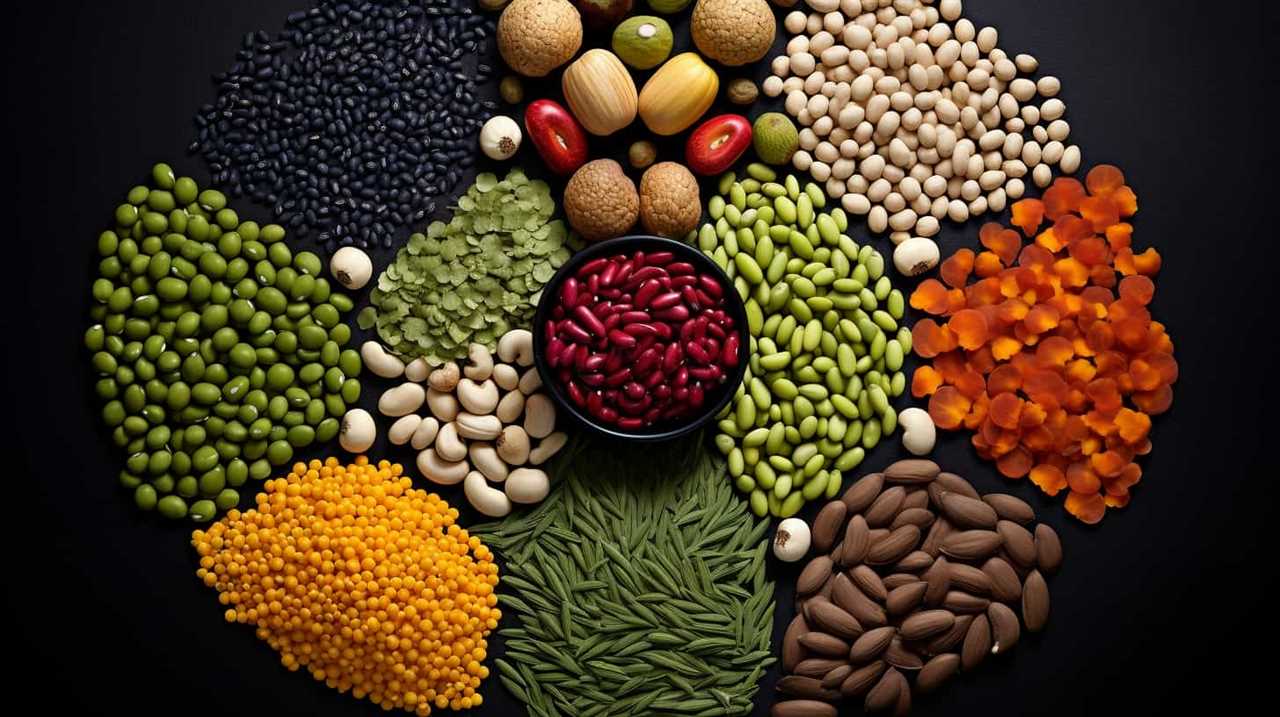
Now, let’s explore how chia seeds became a dietary staple and their role in modern nutrition.
Chia Seeds as a Dietary Staple
Continuing the exploration of seed power, let’s delve into how chia seeds have become a staple in our diets. Chia seeds, once used in ancient chia recipes, have made a remarkable comeback in modern diets. Here’s why:
- Nutritional Powerhouse: Chia seeds are rich in omega-3 fatty acids, fiber, protein, and various micronutrients. They provide a significant boost to our overall nutrient intake.
- Versatile and Easy to Use: Chia seeds can be easily incorporated into our daily meals. They can be added to smoothies, oatmeal, yogurt, or used as an egg substitute in baking.
- Health Benefits: Chia seeds have been associated with numerous health benefits, including improved digestion, reduced inflammation, and enhanced heart health.
With their ancient roots and modern versatility, chia seeds offer a convenient and nutritious way to enhance our diets. So go ahead, sprinkle some chia seeds into your meals and reap the benefits!
Chia Seeds for Hydration and Sustenance
Let’s talk about the benefits of chia seeds for hydration and sustenance.
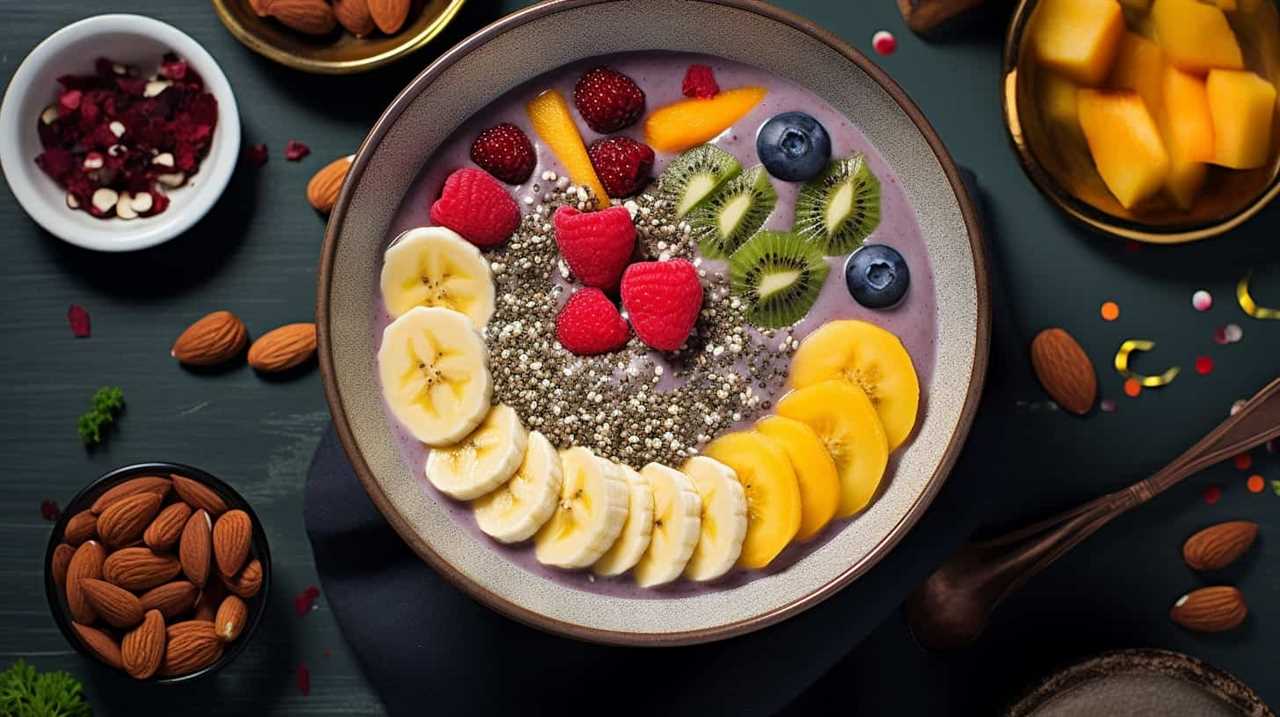
Chia seeds have the unique ability to absorb liquid and form a gel-like consistency, which can help keep us hydrated.
Additionally, chia seeds are packed with essential nutrients like omega-3 fatty acids, fiber, and protein, making them a great addition to our diet for sustained energy and overall well-being.
Whether added to smoothies, yogurt, or used as a topping for salads, chia seeds provide a convenient and nutritious way to stay hydrated and nourished throughout the day.
Chia Seeds and Water
We rely on chia seeds for both hydration and sustenance through their unique ability to absorb and retain water. This characteristic makes them a valuable addition to our diet, providing us with a natural way to stay hydrated and nourished.

Here are three reasons why chia seeds and water go hand in hand:
- Weight Loss: Chia seeds can help with weight loss by expanding in the stomach, creating a feeling of fullness and reducing the urge to overeat.
- Digestive Health: The soluble fiber in chia seeds absorbs water and forms a gel-like substance, which aids in digestion and helps prevent constipation.
- Hydration: Chia seeds can absorb up to 10 times their weight in water, making them a great source of hydration during physical activity or hot weather.
Incorporating chia seeds into your diet is a simple and effective way to support your overall health and well-being.
Nutritional Benefits of Chia
Chia seeds offer a multitude of nutritional benefits, making them an excellent choice for hydration and sustenance. These tiny seeds have gained popularity in modern cuisine due to their versatility and health benefits. Rich in fiber, omega-3 fatty acids, and antioxidants, chia seeds provide a nutrient-packed addition to any meal or snack.
One of the key benefits of chia seeds is their ability to aid in weight loss. When consumed, chia seeds absorb liquid and expand, creating a feeling of fullness and reducing appetite. Additionally, their high fiber content helps regulate digestion and prevent overeating.
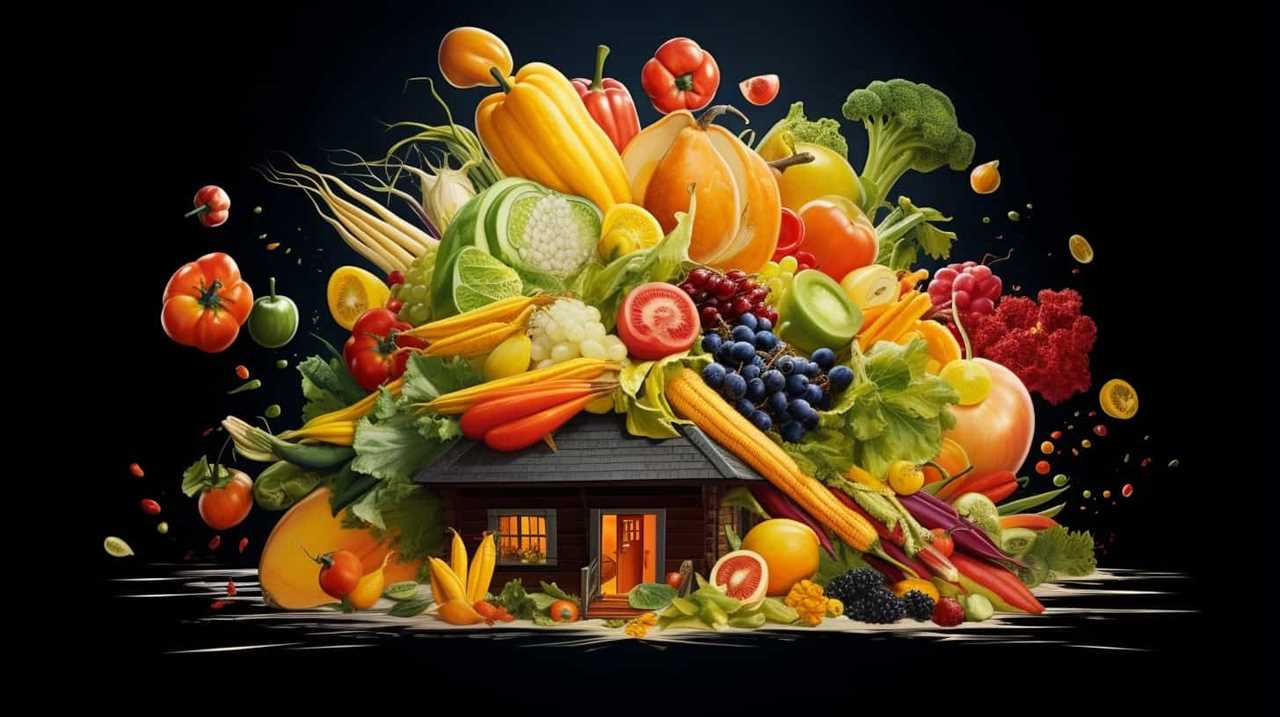
To showcase the nutritional benefits of chia seeds, here is a table highlighting their key nutrients:
| Nutrient | Amount per 1 ounce (28 grams) |
|---|---|
| Fiber | 11 grams |
| Protein | 4 grams |
| Omega-3 fatty acids | 4,915 mg |
| Calcium | 177 mg |
| Antioxidants | High levels |
Incorporating chia seeds into your diet can help support hydration, satiety, and overall wellness. Whether added to smoothies, sprinkled on yogurt, or used as an egg substitute in baking, chia seeds are a nutritious and delicious addition to any meal.
Chia Seeds for Endurance
Continuing our exploration of chia seeds’ nutritional benefits, how can these tiny seeds contribute to endurance during physical activity? Chia seeds are a powerhouse of nutrients that can support long-lasting energy and hydration.
Here are three ways chia seeds can boost your endurance:
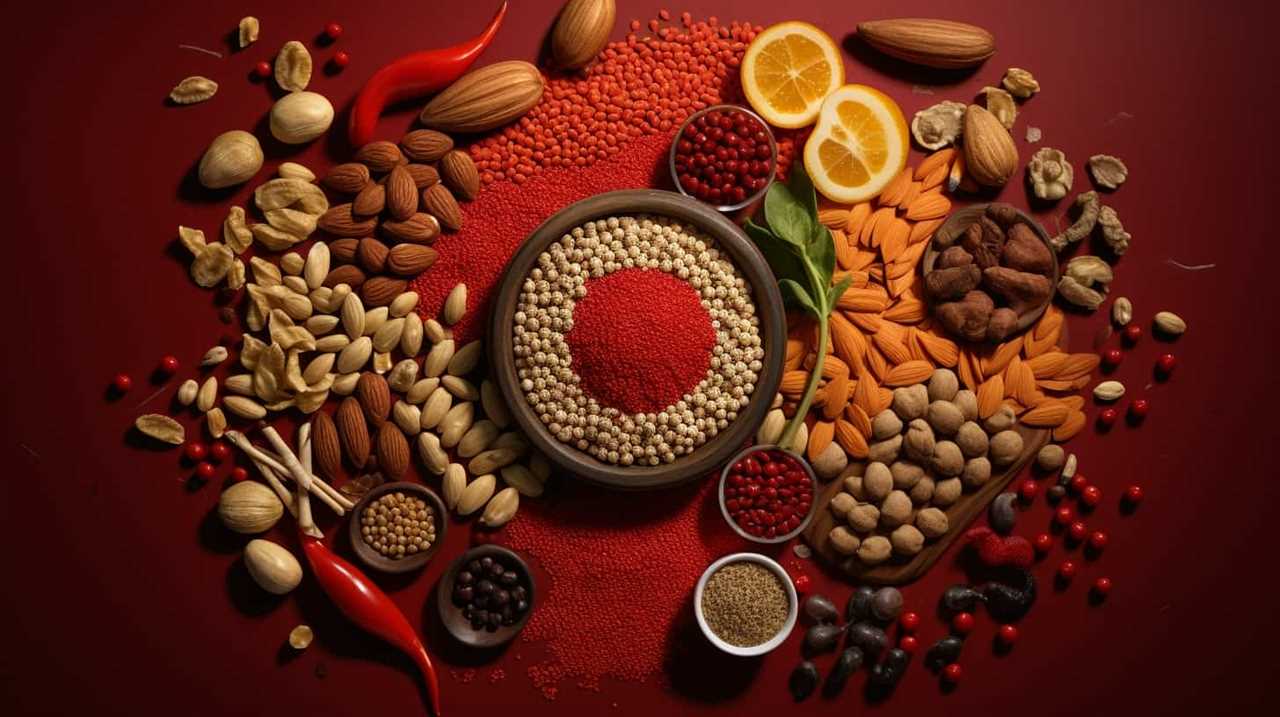
- Hydration: Chia seeds absorb liquid and form a gel-like substance, which can help maintain hydration during exercise. This gel slows down the absorption of carbohydrates, providing a steady release of energy.
- Sustenance: Chia seeds are rich in fiber, protein, and healthy fats, which are all essential for sustained energy levels. Consuming chia seeds before a workout can help fuel your body and prevent fatigue.
- Weight Loss: Chia seeds are low in calories but high in fiber, making them a great addition to a weight loss diet. They can help control appetite and keep you feeling full for longer, which can support your weight loss goals.
Incorporating chia seeds into your diet is easy. Try adding them to your favorite smoothie recipes or sprinkle them over yogurt or salads. Enjoy the benefits of chia seeds for endurance and overall well-being!
Chia Seeds in Shamanic Rituals
Shamanic rituals have long incorporated the use of chia seeds for their powerful nutritional properties. Chia seeds haven’t only become popular in modern wellness practices but have also found their way into contemporary culinary trends. These tiny seeds are packed with essential nutrients, such as omega-3 fatty acids, fiber, and protein, making them a valuable addition to any diet.
In shamanic rituals, chia seeds are often used to provide sustained energy and mental clarity during ceremonies. Their high omega-3 content helps support brain health and cognitive function, allowing participants to maintain focus and connect with the spiritual realm.
Furthermore, chia seeds are believed to possess spiritual properties, promoting balance and harmony within the body and mind. They’re often consumed as part of a sacred offering or used in rituals to enhance one’s connection to nature and the divine.
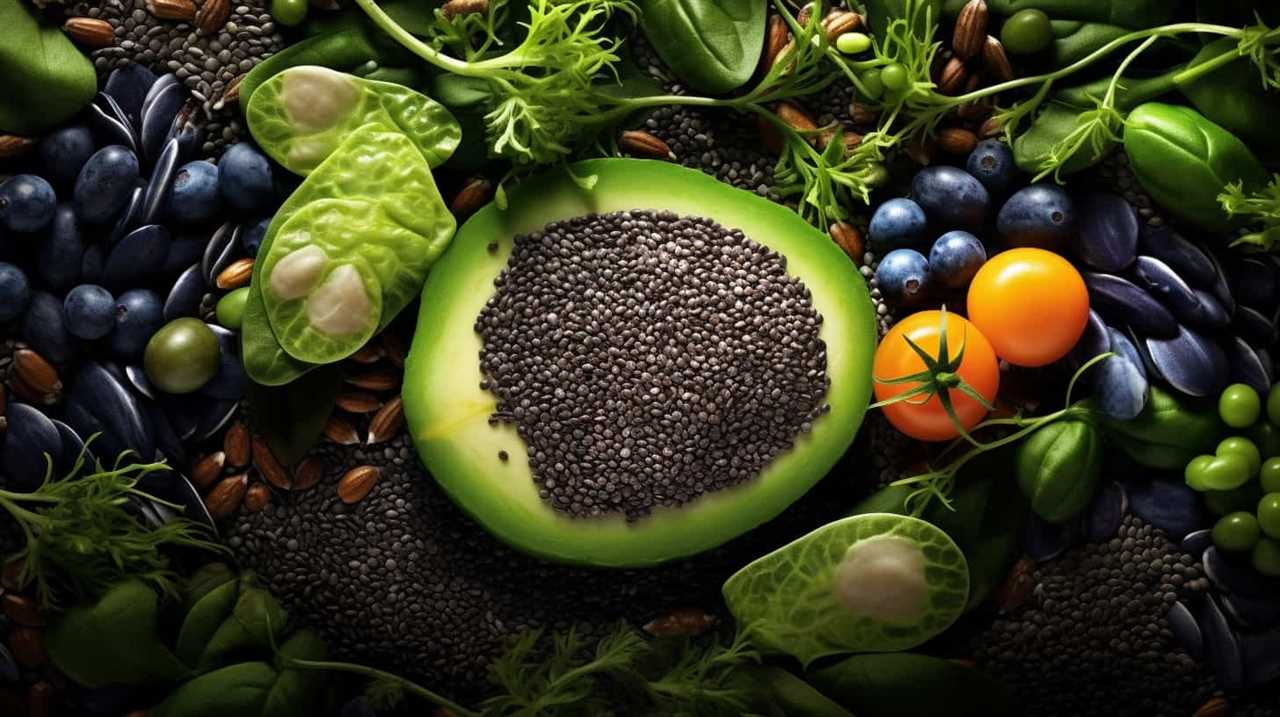
Incorporating chia seeds into shamanic rituals is a practical way to harness their nutritional benefits while honoring ancient traditions. This versatile seed continues to play a significant role in nourishing both the body and spirit during sacred ceremonies.
Chia Seeds in Traditional Recipes
Chia seeds have long been prized for their versatility in traditional recipes, and for good reason. Not only do they add a delightful crunch to dishes, but they also offer a wide range of health benefits.
From their high fiber content to their omega-3 fatty acids, chia seeds are a nutritional powerhouse that have been valued in various cultures for centuries.
Versatility in Traditional Recipes
In our exploration of seed power in traditional recipes, we’ve discovered the remarkable versatility that chia seeds bring to culinary traditions. Chia seeds have found their way into numerous contemporary dishes, adding a nutritious twist to modern recipes.
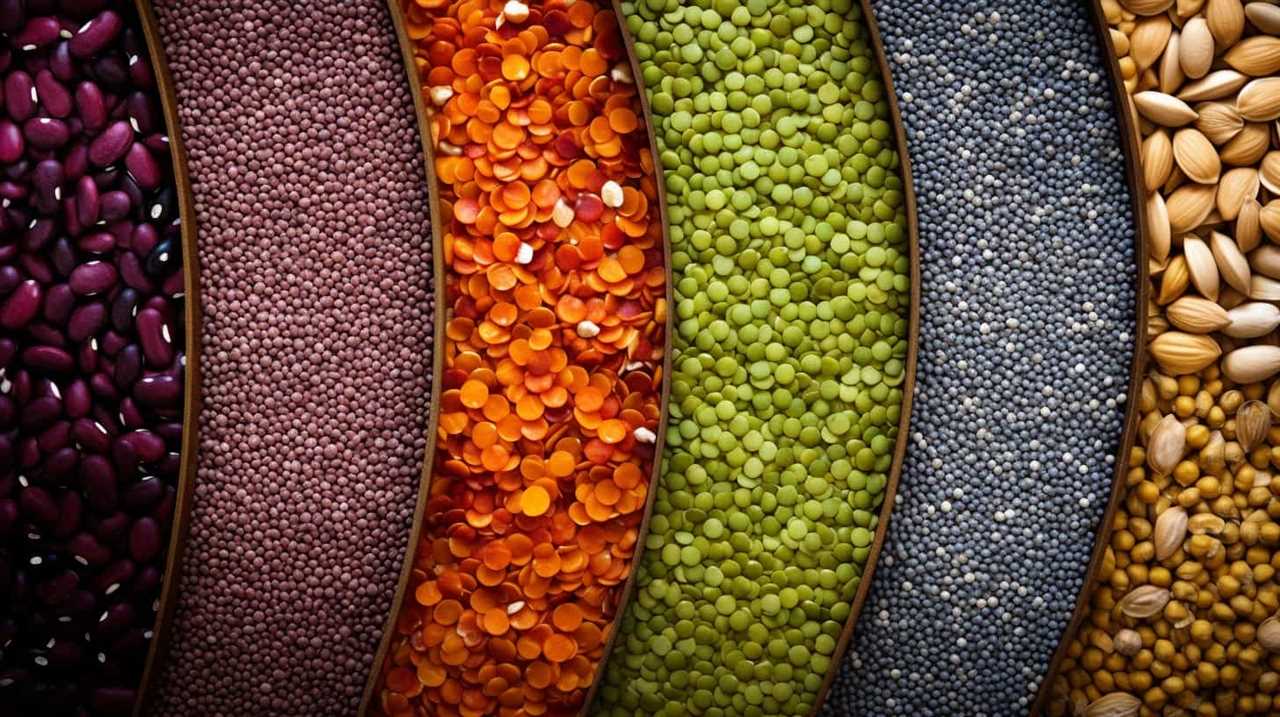
Here are three ways in which chia seeds can be used in traditional recipes:
- Chia Pudding: Chia seeds can be soaked in milk or a plant-based alternative to create a creamy and nutritious pudding. This versatile base can be flavored with fruits, nuts, or spices to create a delicious dessert or even a quick breakfast option.
- Chia Jam: By combining chia seeds with fresh or frozen fruits, you can create a healthier alternative to traditional jam. Chia seeds act as a natural thickener, resulting in a spreadable, sweet, and tangy jam that can be enjoyed on toast, pancakes, or as a topping for yogurt.
- Chia Egg Substitute: For those following a plant-based or egg-free diet, chia seeds can be used as an egg substitute in baking. Simply mix ground chia seeds with water and let it sit for a few minutes until it forms a gel-like consistency. This mixture can then be used as a binding agent in various baked goods.
With their ability to add texture, nutrition, and flavor, chia seeds offer endless possibilities in traditional recipes. Incorporating these tiny powerhouses into your cooking can’t only enhance the taste but also provide a boost of essential nutrients.
Health Benefits of Chia
Exploring the health benefits of incorporating chia seeds into traditional recipes, we discover the transformative power these tiny seeds offer. Chia seeds are packed with nutritional properties that can enhance our overall well-being.
These seeds are an excellent source of fiber, providing a feeling of fullness and aiding in digestion. They’re also rich in omega-3 fatty acids, which can support heart health and reduce inflammation. Chia seeds are a great source of protein and contain essential minerals such as calcium, magnesium, and phosphorus.
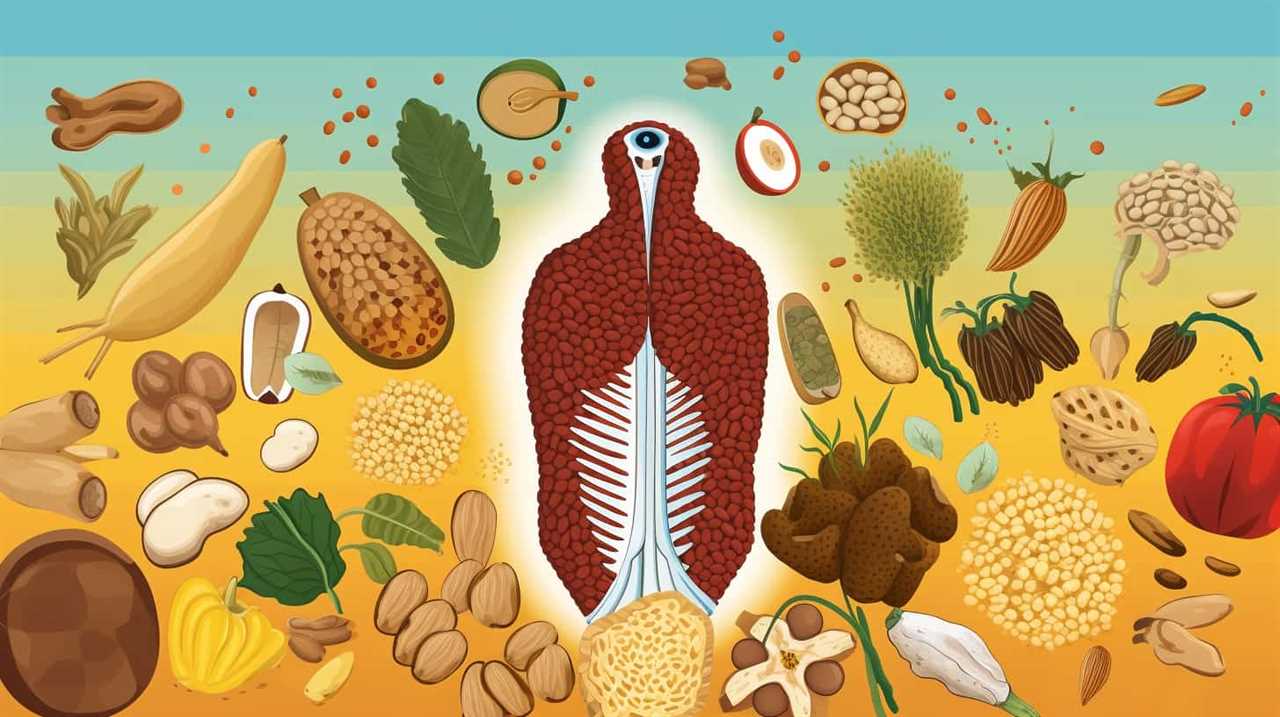
In culinary uses, chia seeds can be used in various ways. They can be added to smoothies, yogurt, or oatmeal for an extra boost of nutrients. Chia seeds can also be used as an egg substitute in baking recipes.
Incorporating chia seeds into traditional dishes is an easy and effective way to enhance their nutritional value.
Cultural Significance of Chia
As we delve into the cultural significance of chia, we uncover the profound role these nutrient-rich seeds play in traditional recipes. Chia seeds have been a staple in cultural traditions and ancient rituals for centuries.
Here are three ways chia seeds are incorporated into traditional recipes:
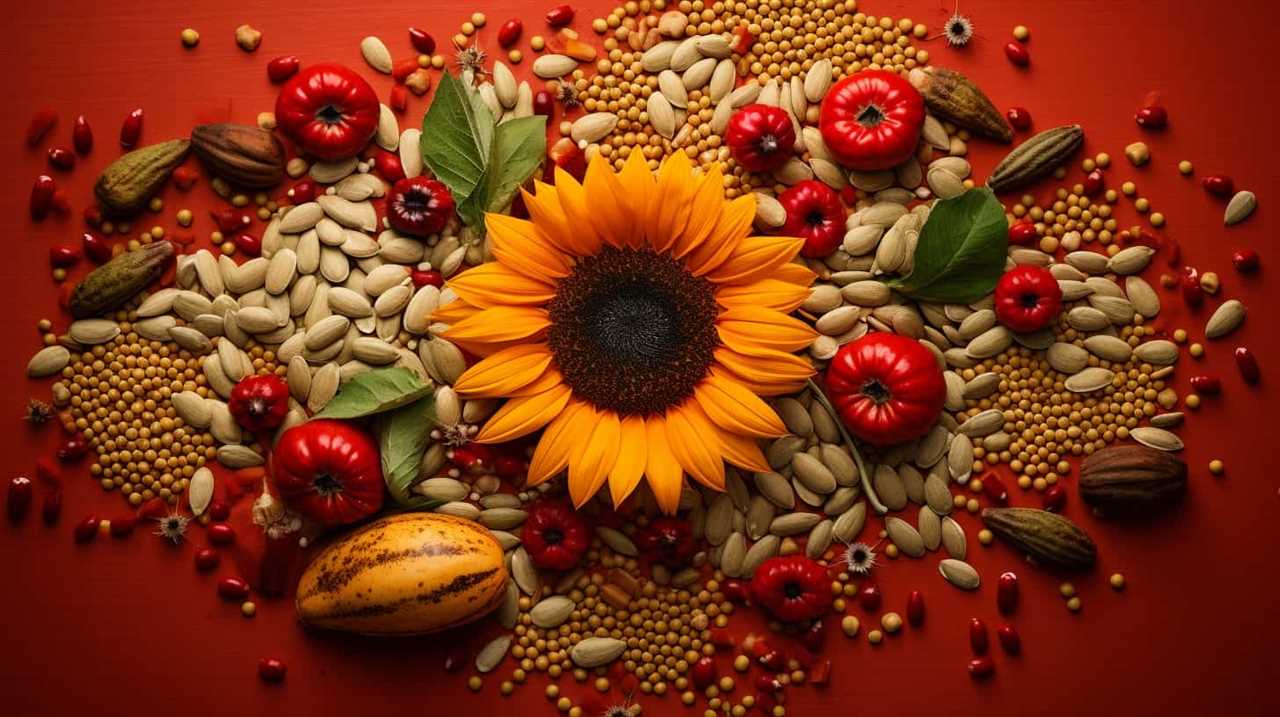
- Chia Pudding: Chia seeds are soaked in liquid, such as milk or coconut water, to create a gel-like consistency. This pudding is often flavored with fruits, honey, or spices, and enjoyed as a nutritious and filling dessert or breakfast.
- Chia Fresca: Chia seeds are mixed with water, lemon or lime juice, and sweetener to make a refreshing drink. This traditional beverage is known for its hydrating properties and is commonly consumed during hot summer months.
- Chia Tortillas: Chia seeds are ground into a flour-like consistency and mixed with cornmeal to make tortillas. These gluten-free tortillas aren’t only delicious, but also provide a boost of omega-3 fatty acids and fiber.
These examples highlight the cultural significance of chia seeds in traditional recipes, showcasing their versatility and nutritional benefits.
Incorporating chia seeds into our own meals can be a way of honoring and preserving these ancient culinary practices.
Frequently Asked Questions
How Were Chia Seeds Traditionally Consumed by the Ancient Mayans?
Chia seeds were traditionally consumed by the ancient Mayans for their numerous health benefits. They incorporated them into their diets by mixing them with water or juice, creating a gel-like substance that provided sustained energy and hydration.
What Role Did Chia Seeds Play in Aztec Cuisine?
Chia seeds played a significant role in Aztec cuisine, serving as a staple food due to their nutritional value. Ancient civilizations recognized the importance of chia seeds for their energy-boosting properties and incorporated them into various dishes.
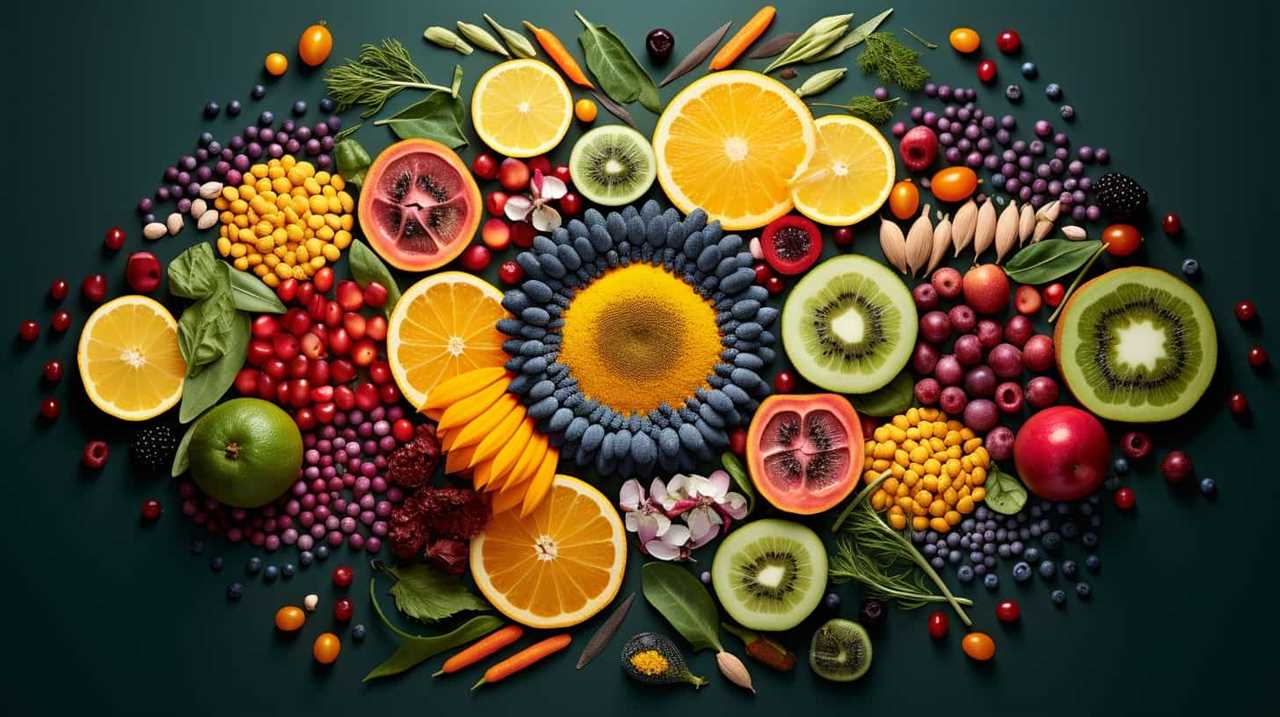
How Did Chia Seeds Become Known as a Superfood?
Chia seeds became known as a superfood due to their impressive nutritional profile and their inclusion in modern diets. They have gained popularity in contemporary health trends for their omega-3 fatty acids, fiber, and antioxidants.
What Other Foods Were Included in Mesoamerican Diets Alongside Chia Seeds?
In Mesoamerican cuisine, chia seeds were often accompanied by a variety of other foods. Recipes included maize, beans, squash, and amaranth. These nutritious ingredients were combined to create delicious and nourishing meals.
How Did Chia Seeds Contribute to the Endurance and Energy Levels of Ancient Civilizations?
Chia seeds have been a staple in ancient civilizations for their incredible endurance and energy-boosting benefits. With their high nutritional value and abundant omega-3 fatty acids, they provided sustained energy and improved overall performance.
Conclusion
In conclusion, the historical use of chia seeds highlights their incredible nutritional power. From the ancient Mayans and Aztecs to modern-day superfood status, chia seeds have proven to be a staple in Mesoamerican diets for their endurance and energy-boosting properties.
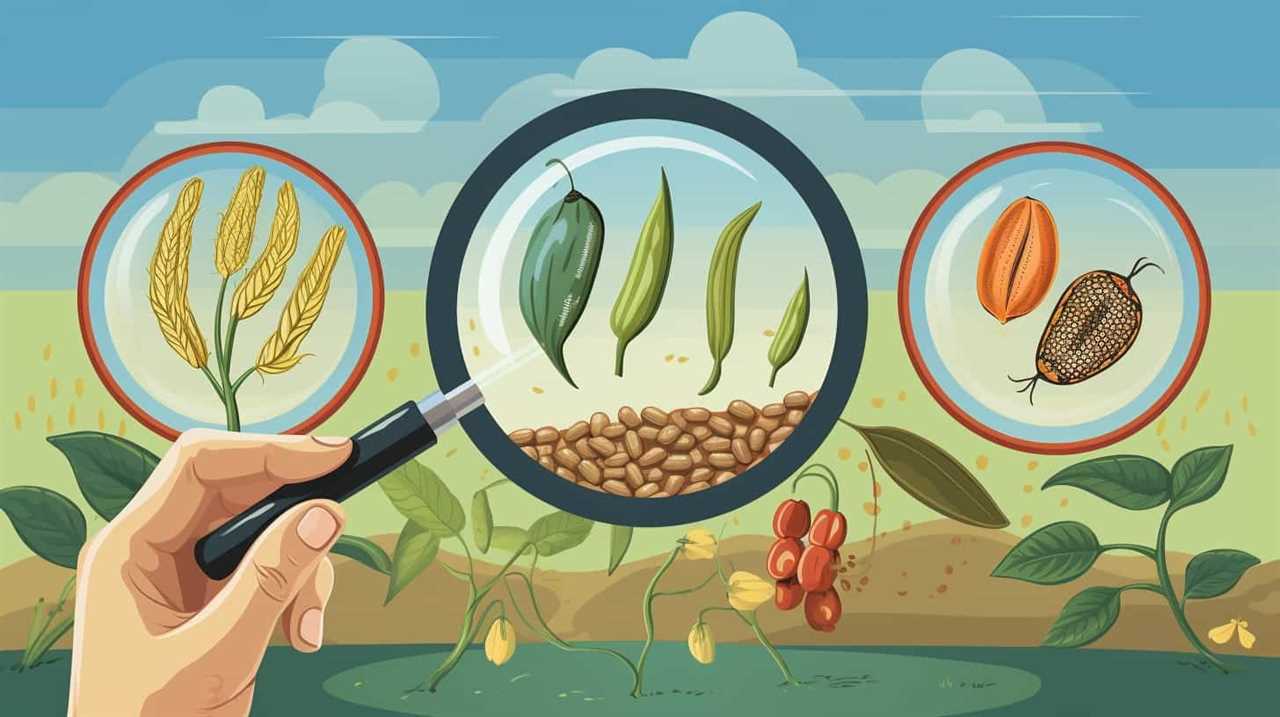
These tiny seeds also offer hydration and sustenance, making them a valuable addition to any diet. Whether used in traditional recipes or incorporated into daily meals, chia seeds are a treasure trove of health benefits waiting to be discovered.


